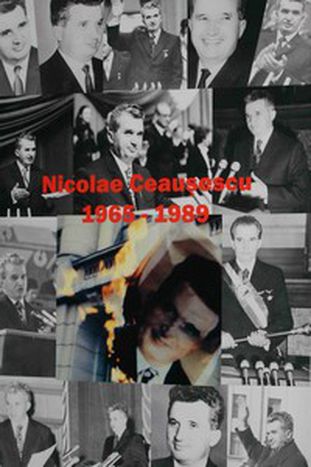
Ceauescu, eternally shadowing Romania
Published on
Translation by:
 claire mcbride
claire mcbride
For the first time, an exhibition in Bucharest lifts the veil on Romania’s Communist past
Two old ladies stand outraged. They remember the long-reigning Communist dictator Nicolae Ceauescu quite differently – as a state leader who from 1965 guaranteed everyone a job and a place to live. They complain that the exhibition, which is now being shown in the Bucharest National History Museum (Muzeul National de Istorie a Romaniei), shows only the negative side of the Ceauescu era. The title of the exhibition ‘The Golden Age’ is intended to be ironic. The first Communist exhibition in Bucharest since the execution of Ceauescus at the end of 1989 is decidedly not wallowing in nostalgia for the era, but honestly reflecting life in the dictatorship.
What's inside
Photos depict millions of Romanians standing in front of empty shops for hours on end, queuing for tiny amounts of meat, milk and cheese. Houses are cold because the heating doesn’t work. Whole villages became areas for ambitious building plans to standardise all villages whilst churches were destroyed or simply moved. Despite this, at the same time the people revered the president of the Socialist Republic of Romania like a god.
In contrast to the meagre lives of the people, the exhibition also displays expensive vases, paintings and tapestries of portraits of Nicolae Ceauescu and his wife and vice prime-minister Elena. The personality cult of Nicolae Ceauescu is associated with Romanian identity, says Oana Ilie, a historian at the National History Museum. ‘It should not be forgotten by the older members of society and the young should be warned and told about it.’
History unrepeated
Family man Vasile Toader is busy explaining every detail of the exhibition to his daughter Cristina. She is still at school and was born long after the fall of Ceauescus. ‘She should know about both the good and the bad sides of the Communist regime. In those days, education was much better and people were more hard-working. But today you can travel anywhere and express your opinion. That is very important!’ explains Toader. He feels that if the dictator had given his people more freedom, he would probably still be in power today.
‘My mother said that Ceauescu was horrible,’ laughs 3-year-old Sara as she occupies herself with a gas lamp on display, which just 20 years ago would have lit up family homes all across Bucharest. In those days electricity was interrupted regularly for hours at a time due to the cost. ‘At weekends, cartoons on TV were only broadcast for five minutes,’ complains a young woman, who was still only small at the time and remembers the hour-long televised Ceauescu parades which were favoured instead. She remembers masses of people on screen with their huge banners proclaiming 'the beloved Comrade Ceauescu.’
'We were afraid they would get us'
Culture minister Adrian Iorgulescu called the exhibition a 'lesson for the young who have a tendency to ignore the events of the past.’ As
clips from party meetings flicker on a TV screen, school children who are watching giggle at how party members over-enthusiastically applaud the president whilst ensuring us that they would ‘never be that stupid’.
Another schoolboy, Andrei, expresses his interest in the techniques that the Secret Security Service used, enigmas which were once feared by all. Hortenzia Bucur lived with the fear of persecution: ‘Once I didn’t let my son leave the house for two weeks because he had learned a Ceauescu joke at nursery school. Had he said it in the street, we would have been imprisoned for the rest of our lives.' The regular pastime of listening to Radio Free Europe was also strictly kept secret: ‘We were scared that they would catch us but we kept tuning in anyway.’
At the same time, the state media published propaganda slogans obsessed with wealth, riches and a constantly growing industry – but the Romanians still starved. ‘It was horrible that we had nothing to eat, but what I hated more was that we weren’t allowed to just be in love. That hurt me more than anything,’ remembers a middle aged lady who wishes to remain anonymous. In 1966, in order to increase the birth rate, Ceauescu made abortion and the use of contraception illegal.
If a woman had more than ten children she was given the title of ‘Heroic Mother’, along with a gold medal and social tax benefits. On the dark side, many women died having illegal abortions. Despite all this tragedy, it is a Romanian woman visiting the exhibition today who gives us the last word: 'We Romanians should appreciate what we have today.'
The exhibition ‘The Golden Age: from Propaganda to Reality’ runs until the end of February in the Bucharest National History Museum. A longer exhibition will then be erected in the parliament building in the second largest house in the world - the biggest legacy of the Ceausescu era
Romania and Bulgaria are the newest European members, and joined the Union on January 1, 2007. cafebabel.com is presenting a series of articles over the following weeks to welcome them in. Look out for an article about the trade-relations between Bulgaria and Germany, which we are publishing on February 23.
All these contributions are written by members of the German network of correspondents, n-ost. N-ost was founded in December 2005 in Berlin, with a network of journalists frm over 20 countries. They aim to act as mediator between Eastern and Western Europe. Their engagement is to support democracy, the liberty of press and the integration of the European Union
Translated from Rumänien: Ceausescus langer Schatten


